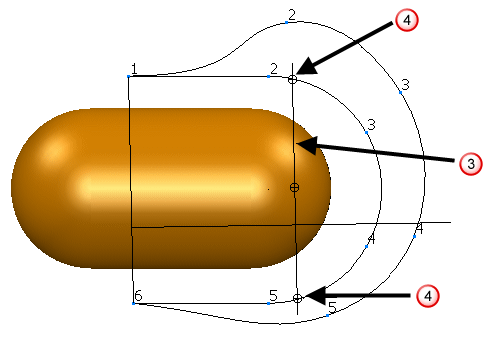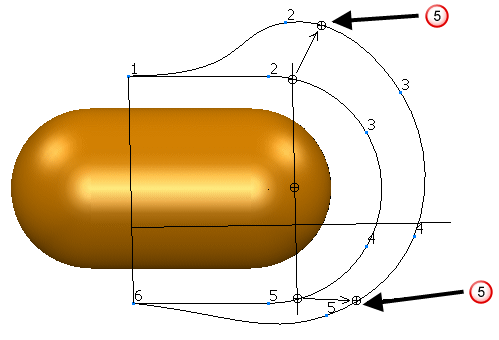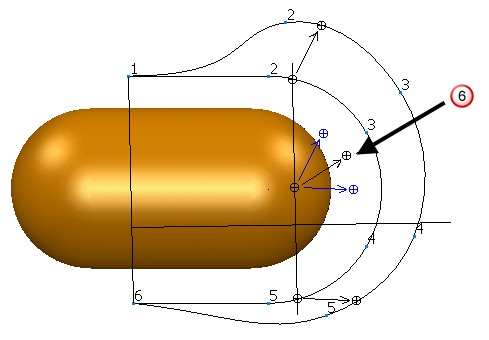Points on the selected objects that do not lie on the reference curve are morphed using the large turning method  .
.
In the example, the point  does not lie on the reference curve and the reference curve has a large turning angle:
does not lie on the reference curve and the reference curve has a large turning angle:

The reference axis  is defined at right angles to the line that joins the two ends of the reference curve. It lies in the plane of the curve if it is planar, else approximately so.
is defined at right angles to the line that joins the two ends of the reference curve. It lies in the plane of the curve if it is planar, else approximately so.

For each point to be morphed:
- a plane is defined through the point, normal to the reference axis
 .
. - two points on the reference curve are defined where it intersects this plane
 .
.

The curve must not be so highly curved that it crosses the plane more than twice, or the morph will fail.
For each of the two points on the reference curve, a distance and direction is defined from it to the point with the same number on the control curve  .
.

If the point to be morphed lies between the two points on the reference curve, it is moved by a combination of their distances and directions .
.

Many points to be morphed can be identified with the same two points on the reference curve. They are not all moved by the same amount. The closer they are to one of the two points, the more influence its distance and direction has on their movement.

If the point to be morphed lies outside the two points on the reference curve, the closest point on the reference curve is found instead, in projection if a projection axis is defined. The point is moved by the distance and direction from the closest point to the corresponding point on the control curve, reduced by any decay.